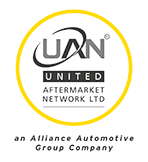
TRW UPHOLDS SAFETY EXPERT STATUS WITH NEW FRICTION MATERIAL FOR SELECT RANGE OF SUVs AND LCVs
TRW Automotive Aftermarket has introduced a new brake friction formula across its European markets engineered to meet the specific requirements of a select range of Light Commercial Vehicles (LCVs) and high end Sports Utility Vehicles (SUVs), to improve braking stability of the vehicles with the highest output of kinetic energy (i). This development further supports TRW’s main objective of providing a safer driving experience for everyone.
The select range of references will supersede existing part numbers and in line with TRW’s policy, will be coated in Cotec – TRW’s innovative brake pad coating which improves stopping distance for the first stops following a brake pad change.
TRW has developed this new friction material for LCVs and SUVs to help provide a safer driving experience. The World’s roads are becoming more congested, and at the same time speed is increasing. Research shows that stopping distance is exponentially longer at high speeds. In fact, each time the speed is doubled it quadruples the stopping distance required. For these vehicles, the issue is compounded by the fact that they are heavy; all of which puts more pressure on the vehicle’s braking system.
Alongside this, the number of these particular vehicles is on the rise. Global figures show that the SUV industry is forecast to reach an estimated $414 billion in 2017 with a compound annual growth rate (CAGR) of 5.7 percent over the next five years. The use of high-performance engines in SUVs and other vehicles leading to reduction in the toxic gases such as carbon monoxide and carbon dioxide as well as technology advancements and industry competition are likely to further fuel growth.
(i) The kinetic energy of an object is the energy which it possesses due to its motion; mass x speed²

(ii) Global SUV manufacturing Industry 2012-2017: Trend, Profit and Forecast Analysis
“Only 15 percent of countries have comprehensive laws relating to five key risk factors, a main one being speeding. An increase in average speed is directly related both to the likelihood of a crash occurring and to the severity of the consequences of the crash,” explained Soeren Kristensen, TRW’s global marketing services manager.
“Pedestrians have a 90% chance of surviving a car crash at 30 km/h or below, but less than a 50% chance of surviving an impact of 45 km/h or above. This means that manufacturers have a vital role to play in helping to provide a safer driving experience.”
“TRW is an active supporter of the United Nations ‘Decade of Action for Road Safety 2011-2020’. This Decade was launched in May 2011 in over 110 countries, with the aim of saving millions of lives by improving the safety of roads and vehicles; enhancing the behaviour of road users; and improving emergency services.”
Soeren concluded: “As a global leader in the field of automotive safety, we take this role very seriously and spend millions of Euros every year on the research and development of our materials, products and technologies in order to make our roads a safer place.”



 Click here to open the navigation menu
Click here to open the navigation menu